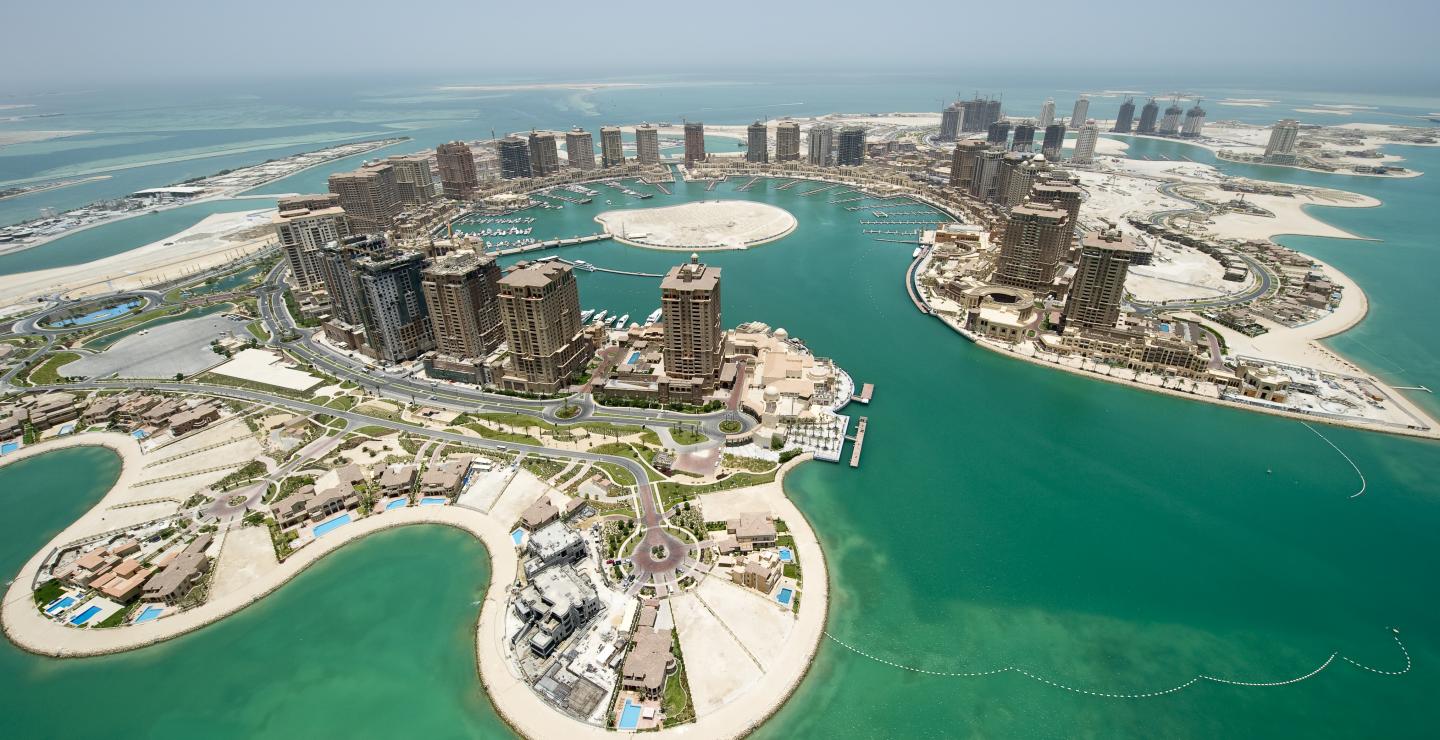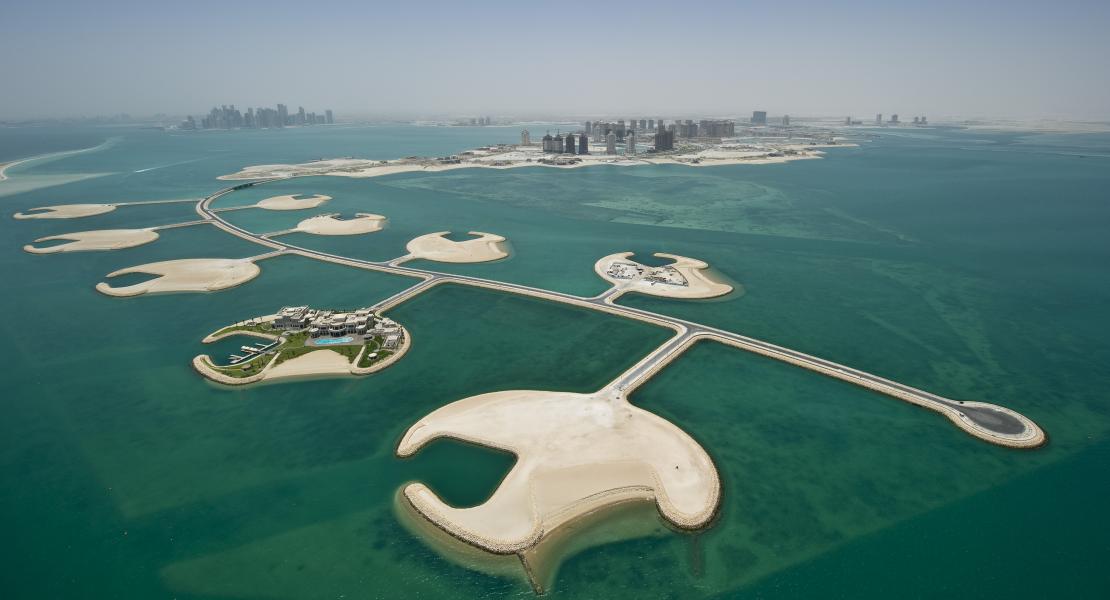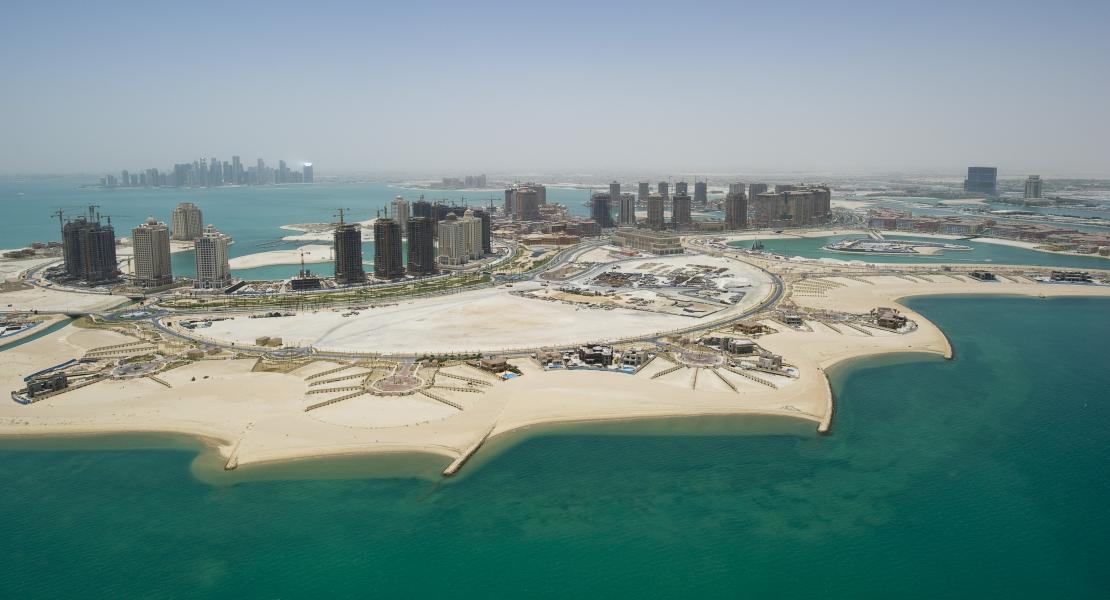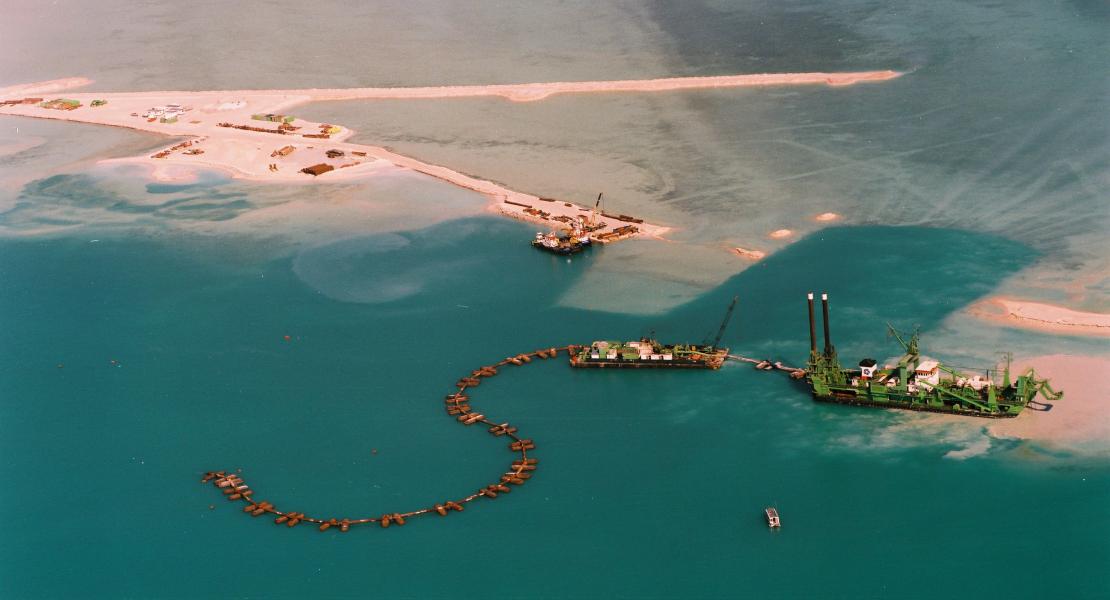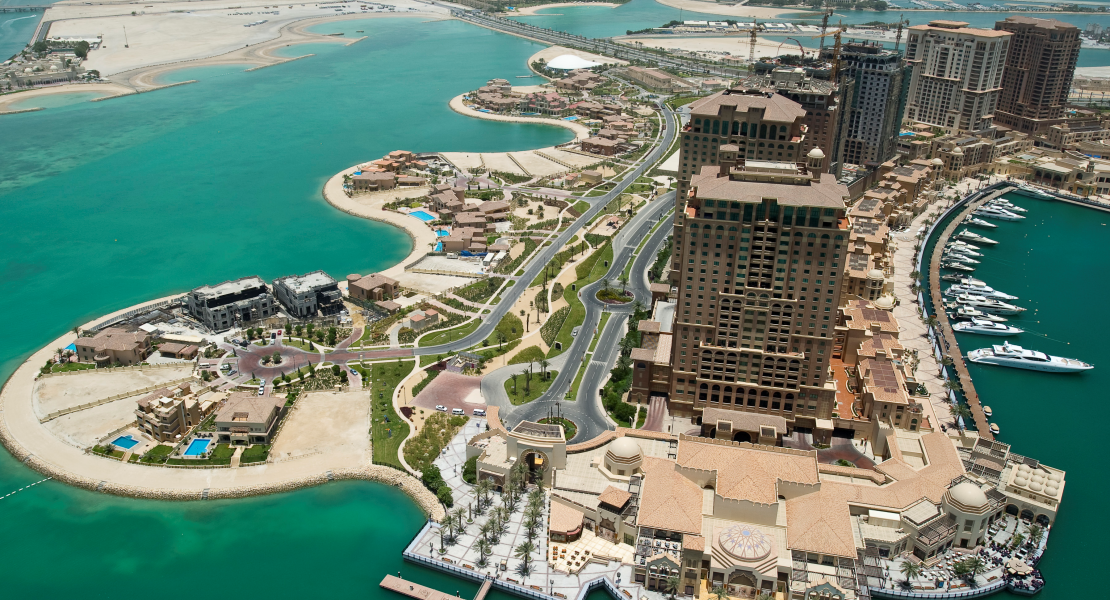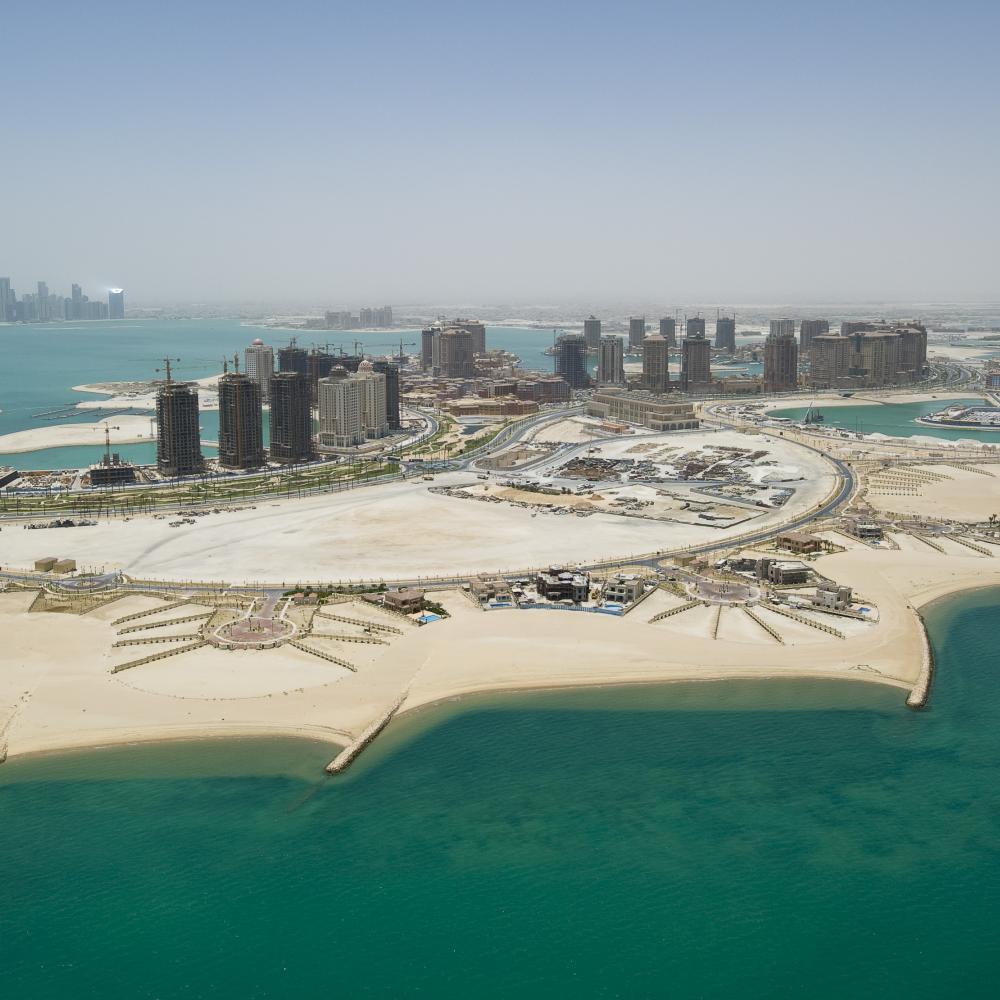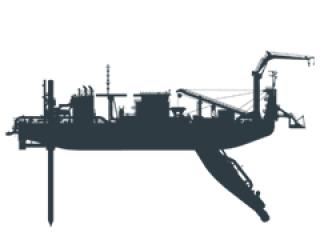Excavation and backfilling by means of dry earthmoving equipment and hydraulic reclamation
The subsoil within the footprint of the island to be constructed is a natural shallow area consisting of different layers, ranging from fine soft materials to hard limestone rock. The reclamation works for the island had to be carried out to a final level varying between +2.5 m and +2.7 m Qatar National Height Datum (QNHD), while the existing seabed levels before reclamation were between -2.5 m and -4.0 m QNHD.
Our volume balance analysis showed that two thirds of the total reclamation volume needed to construct the island had to be excavated on-site within the footprint of the island to be constructed and the remaining volume had to be extracted elsewhere by means of a cutter suction dredger. Once we identified a suitable marine sand source where this additional volume could be dredged, we came to the conclusion that the large pumping distances had to be bridged by using an intermediate booster station.
Due to the hard subsoil in areas to be excavated within the perimeter of the island, different excavation techniques had to be used. Certain areas to be excavated below the sea level had to be surrounded by dikes to allow for these areas to be de-watered making dry excavation works under the seabed level possible; for this purpose a battery of 3,000 m³/h pumps had to be used on a continuous manner to keep those areas dry.
We performed the rest of the excavation works to be carried out outside the perimeter of the proposed island by using the cutter suction dredgers 'Al Mahaar' and 'Kalis II', two dredgers that have been modified for dredging in shallow waters. The 'Al Mahaar' was modified especially for this project so it could be deployed for rock dredging in very shallow waters.
Accelerated settlement techniques
Additionally, some areas within the footprint of the island consisted of an unstable, soft silty subsoil, which resulted in a large volume of reclamation needed to compensate the consolidation of these soft layers. In order to respect the strict planning schedule, we had to use accelerated settlement techniques in these areas in order to reduce the consolidation time of these soft layers. These specialised techniques consisted of vertical synthetic wick drains, combined with temporary surcharge loads of 3 m (above the final reclamation level). This surcharge loads were placed on top of the reclamation by using dry earth moving machines, such as dumpers and bulldozers. In total, an area of 640,000 m² was consolidated using this accelerated settlement technique. After the required settlement was achieved, we removed the surcharge loads, also by dry earth moving techniques involving excavators, wheelloaders, bulldozers and dumpers.
Quaywall construction
During the last phase of the project, approximately 47,500 m² of quay walls were also constructed. Concrete blocks, pre-cast on site, were used for the construction of these quay walls.
Protective measures with regard to flora and fauna
In order to mitigate as much as possible the disturbance created by the construction works to the local flora and fauna, we performed a wide range of monitoring measurements and controls. Before the start of the project we measured a number of parameters to define the project baseline environmental conditions and these same parameters were regularly (daily, monthly) monitored during the course of the project.
This included:
- Noise level
- Air quality
- Soil condition
- Water samples were analysed in laboratory (fine sediments content, PH, temperature, conductivity, salt content, ...)
- Meteorological data: wind, tides, currents, etc.
- Continuous turbidity measurements in the vicinity of the dredging activities as well as at the outlets of the reclamation water back into the sea
- Sedimentation around the area was surveyed
In addition, silt screens were used during the dredging activities in order to limit the impact of these activities to the surrounding areas.
Shore protection
Finally, a long coastal strip of approximately 39 km at the perimeter of the island had to be protected from erosion. This required an impressive volume of about 2 million m³ of rocks and stones to be placed in breakwaters, groynes and other rock revetments. According to the ‘make work with work’ principle, a rotary 'Grizzly' and several sieving installations were deployed on-site in order to recover suitable rocks and stones from the huge volume of excavated materials and re-use them for the construction of the shore protection.
